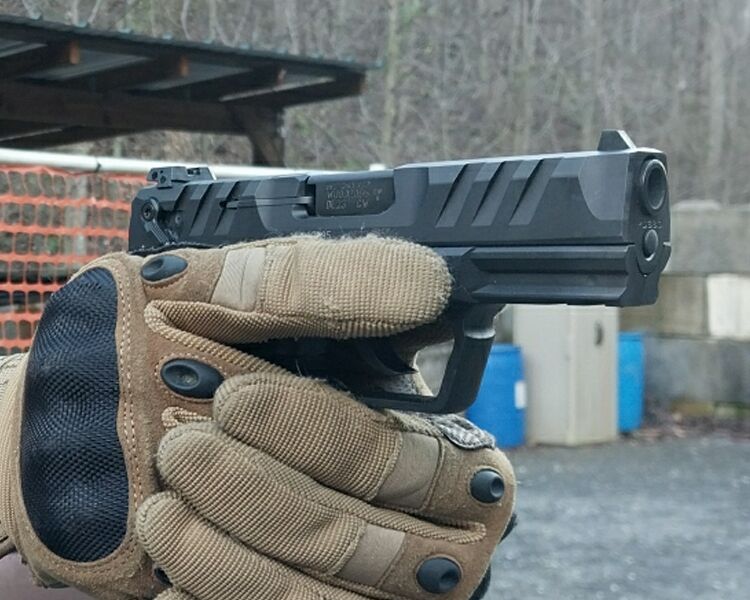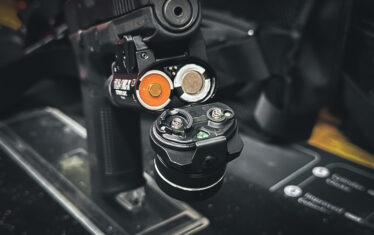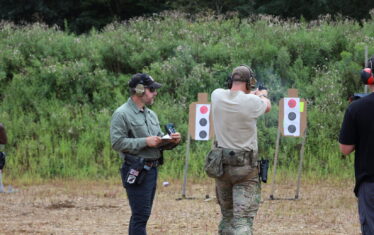The .380 ACP cartridge refuses to die. Long a pocket pistol mainstay, .380 is generally considered too weak when better 9mm options abound. But gunmakers are upsizing .380 ACP platforms, offering larger frames and longer barrels that increase the cartridge’s performance while significantly easing recoil.

The new Walther PD380 is one of those bigger handguns, while still being geared toward concealed carry.
I’ve been running a PD380 for several months now. There’s a lot to like, but I do have a couple of concerns. We’ll get into that below, but let’s start with the PD380’s specs.
Walther PD380 Specifications
- Caliber: .380 ACP
- Capacity: 9+1
- Magazines: Single Stack (2)
- Barrel Length: 3.7 inches
- Overall Length: 6.48 inches
- Height: 5.15 inches
- Width: 1.24 inches
- Weight: 20.6 ounces (Unloaded)
- Trigger: Single/Double Action
- Slide/Barrel Material: Steel
- Frame Material: Polymer
- 2-slot Picatinny accessory rail
- Ambidextrous manual safety catch and internal drop safety.
Features
The PD380 shines ergonomically. The PD380 mimics the earlier PK380’s size and shape, but it incorporates upgrades from Walther’s flagship PDP line. Walther’s grips are as good as anyone’s and better than most. The PD380’s grip is reminiscent of the PDP but with finger grooves and more palm swell. That said, the grooves are still understated and fit my hand very well.
The texturing also mimics the PDP, though the grip’s front is smooth. I really like the ambidextrous thumb rests. They aren’t necessary, but it’s a nice touch. The magazine base plates provide a nice pinky rest.

The PD380’s slide may be its salient feature. Walther has once again borrowed from its flagship line to give this new gun an easily racked slide like the PDP-F.
Aided by deep front and rear cocking serrations, this may be the most effortless slide I’ve ever run. There’s a loaded-chamber observation port just above the extractor. The sights are a standard 3-dot affair The front sight post is replaceable if you want to upgrade. The rear sights are adjustable for windage and elevation, which is nice. I wish more guns had that capability.
The trigger is wide with a serrated face for a positive purchase. The long double action pull is about 10 lbs., and the single action is around 5.5. The SA has a bit more creep than I expected from a Walther trigger, though the break is clean enough. It’s no PPQ trigger, but it’s not meant to be since the PD380 is geared more toward new shooters. I liked it once I shot the gun for real.
The serrated hammer is easy to reach and grip, but the operation feels mushy, and not as positive as I’d like. I preferred cocking the PD380 by racking the slide. The PD380 does not have a slide release lever. That means inserting an empty mag to lock the slide back, and you’ll have to manually release it. Disassembly does not require locking the slide back and is pretty simple.
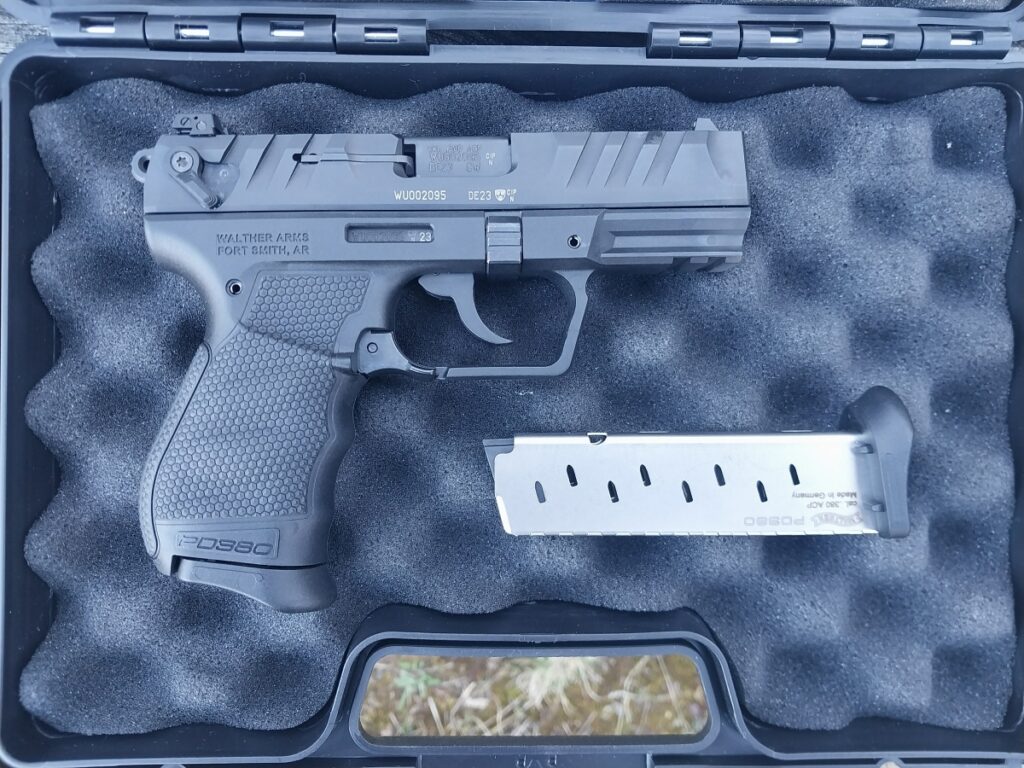
Walther returns to the ambidextrous trigger guard paddle release, which I prefer. But it’s very short, reminding me of the P22. The ambidextrous slide-mounted safety lever is fine, but requires consistent practice to operate, as does the mag release. More on those in a moment.
Walther PD380 Operation
I noted the easy-to-rack slide. I love it, and I think Walther hit a home run there. The PD380 is a soft, accurate, and reliable shooter, which I’ll detail below, but we need to address a couple of things first. They aren’t really bad, depending on your viewpoint, but I think they could have been done a little better.
Magazine Release
First up is the mag release. I said I prefer the trigger guard-mounted paddles. I think they’re far superior to the push button release, if properly executed. That’s one thing (among many) that I love about the PPQ M1 and the P99. So, I was excited to see that feature on the PD380. The paddles work well, but I wish they were longer. I operate my PPQ and P99 mag releases with my trigger finger. It’s very intuitive.
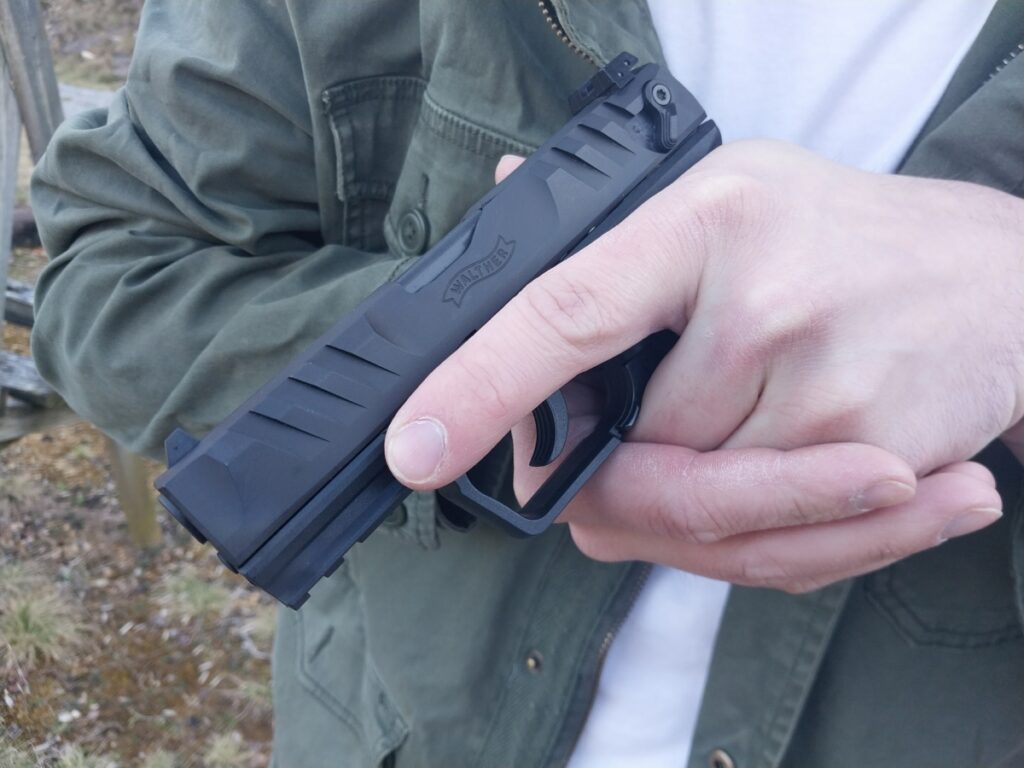
I also use my trigger finger with this gun, but the angle is kind of awkward, and it took some work to develop the proper muscle memory. Honestly, I still get the angle wrong sometimes and the mag doesn’t eject, forcing me to hit it again. I’d like to see it extend further along the trigger guard. I tried reaching with my thumb, but no dice. You might be able to reach it, but I can’t.
Safety Mechanism
Second, and most important to me, is the safety mechanism. I have no problems with safety catches, and I recognize their desirability on a hammer-fired pistol. But I prefer decockers, especially on carry guns. Some folks carry “cocked and locked,” sweeping the safety off when they draw, and that’s fine. But the PD380 makes that a little harder than, say, a 1911.
I also don’t like that the safety doesn’t disengage the trigger. Rather, it turns the safety lever connecting pin so that the hammer can’t fall directly onto the firing pin. If you pull the trigger with the safety on, the hammer will fall. It just can’t quite reach the firing pin. It works fine, but I can’t say I’m a fan. The manual does not explain this procedure, which doesn’t help.
I asked Walther about the safety design, and they told me that they wanted to give new shooters the ability to carry the gun loaded, with the safety on, in single action. “Cocked and locked,” if you will. The reason was that new shooters, for whom this gun is intended, may not be able to pull through the double action.
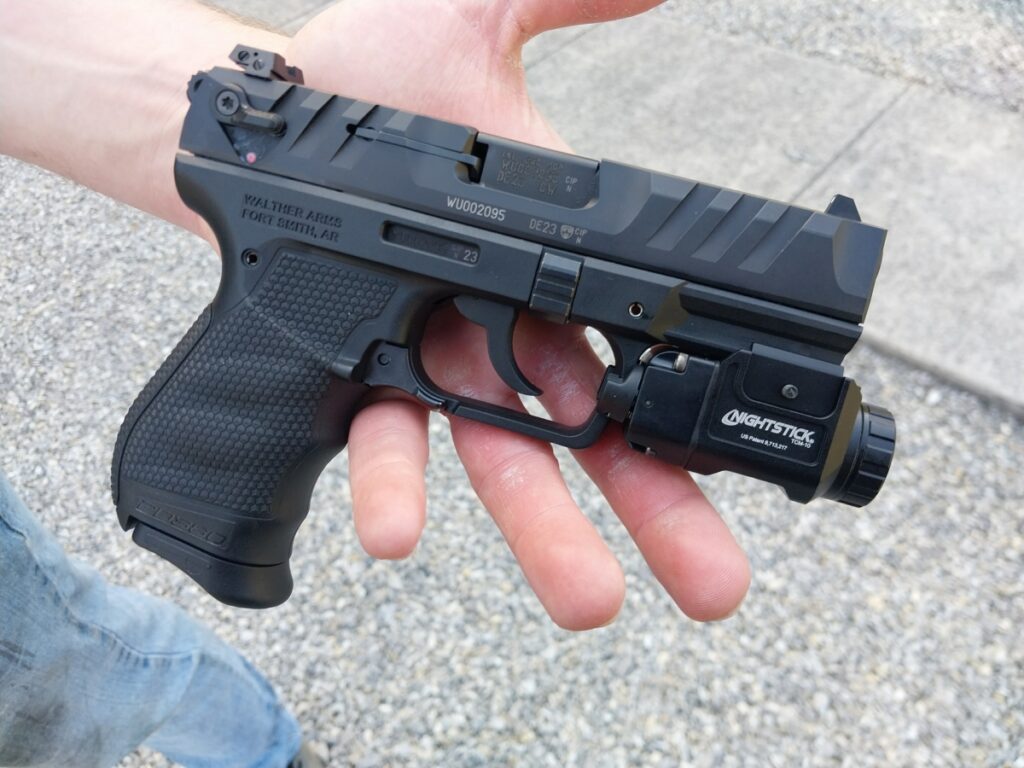
The short lever is mounted high on the slide. To effectively carry cocked and locked, the shooter must push the lever up during the draw stroke. That requires practice since it’s not nearly as easy as sweeping a 1911 safety downward. The trick is properly positioning the thumb to push forward as you draw. It’s not a natural motion, but it can be learned with practice.
I have to wonder, however, which is worse: pulling through a 10 lb. double action trigger or performing a fine motor skill action while presenting on a threat. The answer depends on the shooter. The PD380’s manual does not explain this operation, and I question whether a new concealed carrier will do the work to develop the necessary skill.
If I were carrying this gun for real, it would be in double action with the safety off. The DA pull really isn’t bad, and the gun shoots so softly that I didn’t mind it at all. Your mileage, of course, may vary.
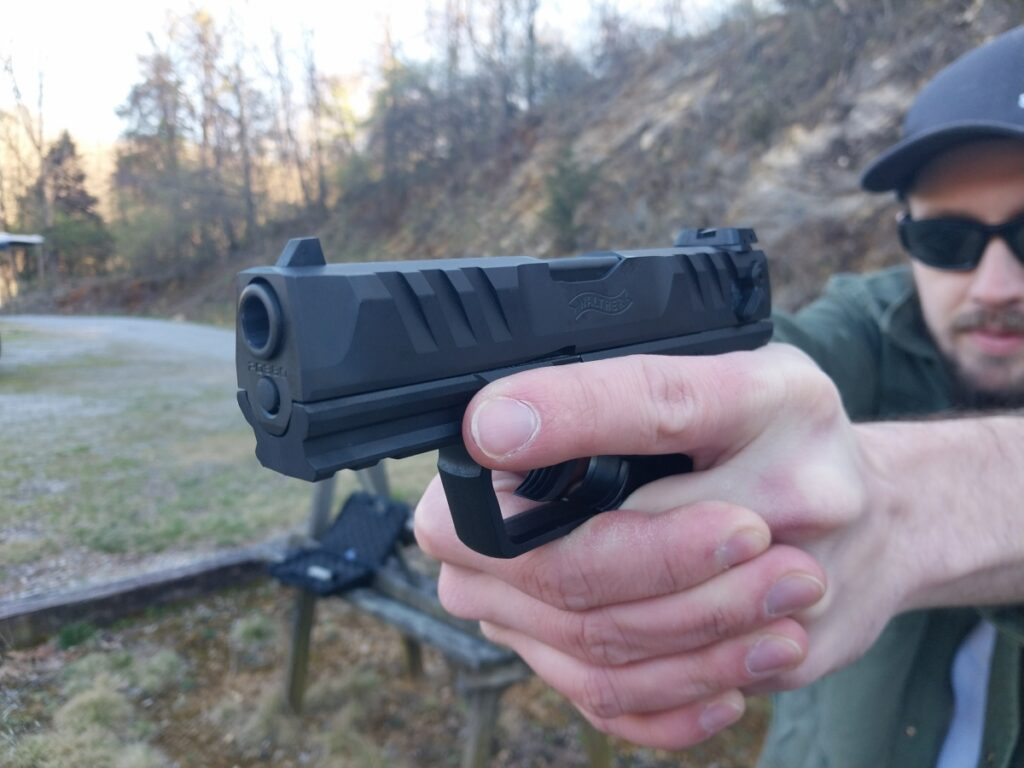
Shooting the Walther PD380
Let’s talk about how the PD380 shoots, now that I’m done complaining. This is among the most pleasant guns I’ve ever fired. I have little experience with .380 ACP guns, but what I have isn’t great, until now. I always viewed the .380 cartridge as overly snappy and not much fun. But I now recognize that I was judging the round by the guns from which I fired it. Pocket pistols aren’t exactly known for recoil mitigation.
The PD380 is not a large gun, but as I noted earlier, it is significantly larger than the pocket rockets I’ve fired previously. The .380 ACP cartridge is very nice in this gun. I ran a plethora of brands, using both target and defensive rounds:
- 90-grain PMC Bronze FMJ
- 95-grain Remington UMC FMJ
- 95-grain Federal American Eagle FMJ
- 95-grain Blazer FMJ
- 95-grain Winchester T&P FMJ
- 90-grain Black Hills JHP
- 90-grain Hornady XTP
- 95-grain Magtech JHP
The ammo was generously provided by the good folks at AmmoToGo.com, and I thank them for their sponsorship.
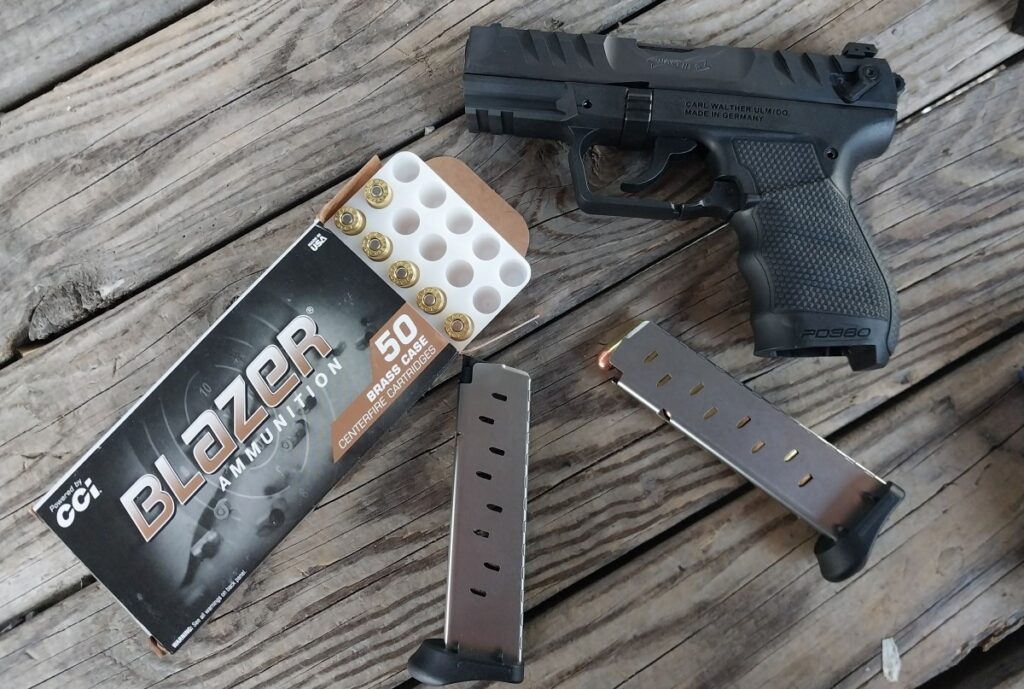
All told, I ran 345 rounds through the PD380, with 95 of those being defensive loads. The PD380 ran flawlessly, eating everything I fed it.
I ran the gun at ranges of 3 to 15 yards. I fired slow, measured shots and I ran drills. My son and I ran 2-2-2 and Dot Torture from 7 and 15 yards, with retention drills at 3 yards. The gun was very accurate, aided by the soft recoil. That low recoil also helped me get back on target quickly.
Mag changes were a bit of an adventure until I learned to use the short mag release paddle. But a longer paddle would help a lot. I ran it cocked and locked, and double action with the safety off. As noted earlier, I preferred the latter. The DA trigger isn’t bad at 10 lbs., though it’s understandably long. That’s the trade-off for going hammer down with no safety. I quickly learned where the reset was, and the single action was very nice.
We both like the wide, serrated trigger. I know exactly where I am on it and it’s comfortable on my finger. And the grip is fantastic. Very comfortable. Overall, the PD380 is a good shooter. I liked it a lot.
The PD380 is a new gun, so I didn’t have much holster choice. But I picked up a Safariland 575 IWB Pro-Fit for the Glock 43, and it worked just fine.
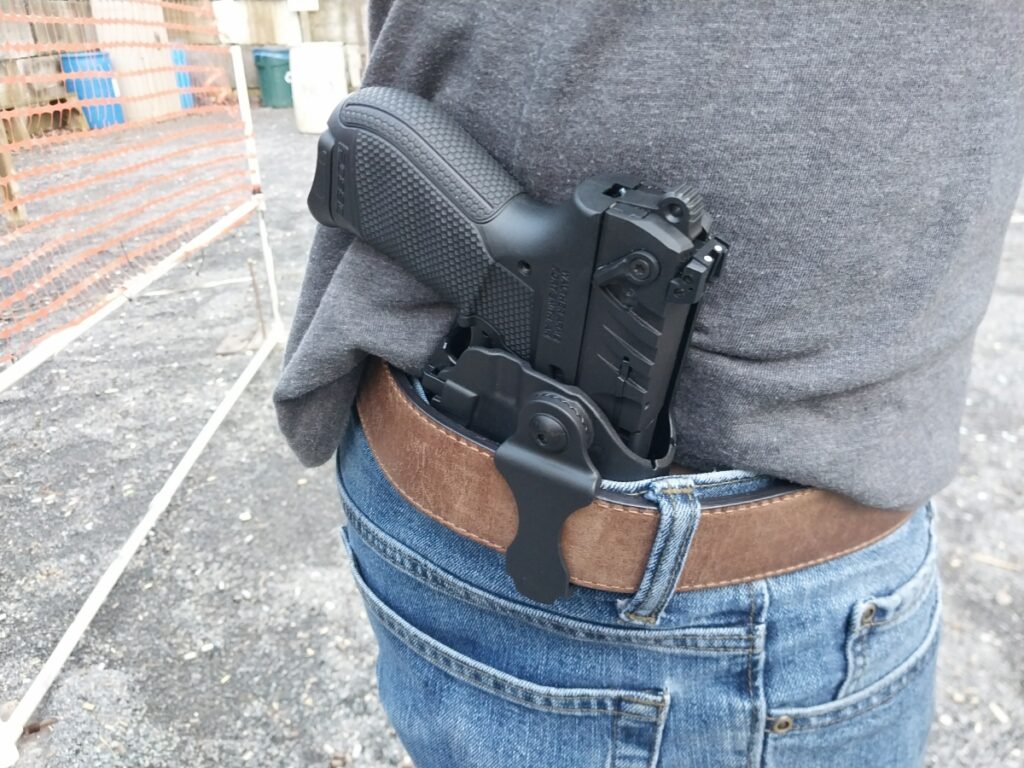
Final Thoughts
The PD380 is very comfortable and has many of the features that have endeared me to Walther since I picked up my first P38. The grip, the slide, the soft recoil, the accuracy…it’s all there. And I like the wide trigger face. It really is a pleasure to shoot.
I do wish the mag release was longer, and that the mag held more than 9 rounds. It seems like Walther could have maybe gone with a staggered mag for more capacity on a gun that’s wider than many such 9mm offerings. And finally, I don’t love the safety mechanism. We’ve been through that.
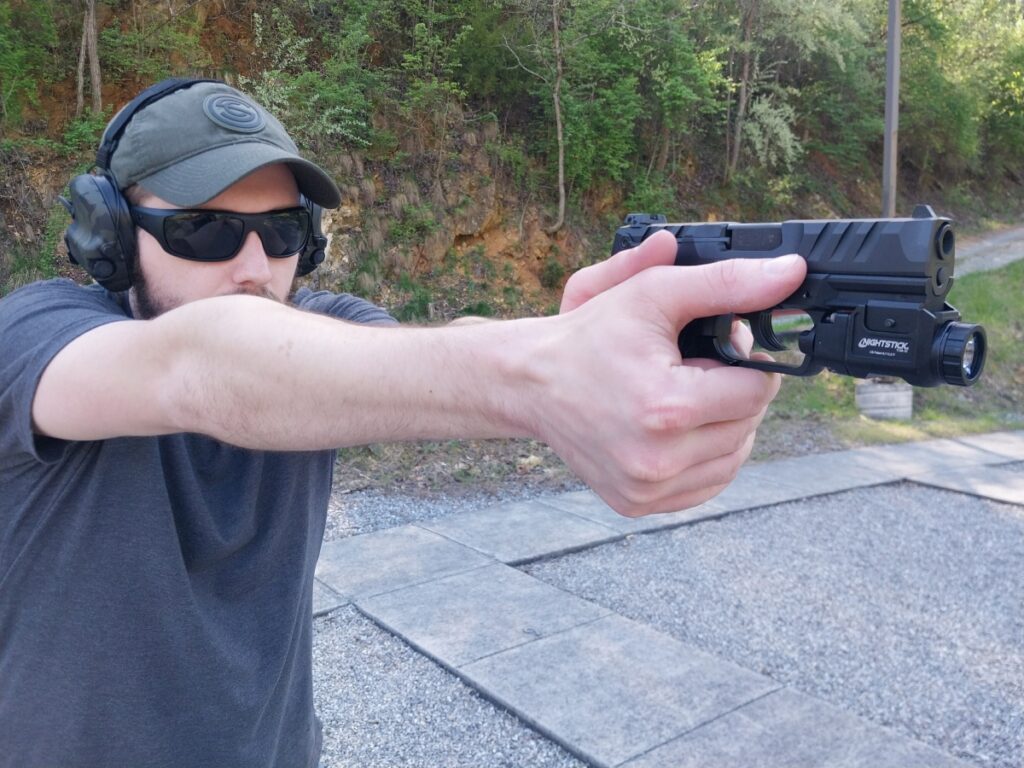
The controls are a little different than what most shooters are familiar with, so you’ll need to put in the work. Do that, and you’ll have a smooth, solid concealed carry gun that you can count on.
Overall, the PD380 is a quality handgun that will go “bang” when you pull the trigger. And it will hit the target if you do your part. The fantastic ergonomics will help with that. That’s what counts in the end.





